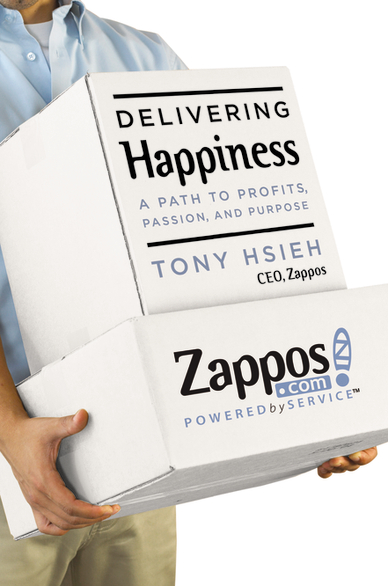
“How could I provide better customer service to my students?” This is the question I kept asking myself after reading Delivering Happiness by Tony Hsieh. Hsieh (pronounced like Shay) is the CEO of Zappos.com, an apparel company that is renowned for their dedication to serving customers. When I started the book I thought, “well this will be an interesting read, but I am lucky I don’t do customer service.” By the time I finished this book, my whole view of teaching changed. Hsieh’s work provides two worthwhile insights for teaching that I cover here. First, I argue that teachers do provide customer service and second, what makes people happy.
Providing Customer Service:
I reject the consumer model of teaching flatly. I am not an employee of my students. What happens in my classrooms is not a transaction. Good classes help students develop in personal and professional ways. Great teachers focus not only on the material, but on guiding students through a process of learning and personal growth. So before we can go any further with this discussion I need to disentangle customer service from consumerism and capitalism. A more useful definition of customer service, for teachers, is creating professional connections with students that acknowledge their humanity and uniqueness. Customer service then is the opposite of a teacher-student relationship where the only thing a teacher knows about the student is what their grade book tells them.
I can provide customer service to my students by knowing what their educational dreams are and directing them to resources that can help make them a reality. I can provide customer service by committing myself to learn each student’s name (currently I have ~200 students, FYI). I can provide customer service by learning each of my student’s names and at least knowing some basic information about them. Responding to email in a timely manner is customer service. Being in your office during office hours is customer service. Providing clear directions for all of your assignments and using rubrics when grading is customer service. Providing rich feedback on written work is customer service. I can provide customer service by avoiding terse language in emails and showing patience when I answer a question for the hundredth time.
How to make your students happier:
Making students happy is simultaneously something that many faculty would say is, “not my job” and other faculty would say is the holy grail they’ve been searching for their entire professional lives. You can’t make everyone happy, but in Hsieh’s book he reviews some of the basic findings happiness research provides. Psychologists of happiness find four main situational aspects that lead to happiness. 1) Perceived control, 2) Perceived progress, 3) Connectedness, and 4) Being part of something bigger than yourself. I’ve been thinking about ways I could structure my class to increase each of these.
Perceived Control
The clearer you can be with what you expect of your students the more control they will perceive. Clearly defined assignment directions and a clear syllabus are good steps in the right direction. Grading rubrics also promote student efficacy. I am also a big fan of providing my students with multiple options on any assignment. There is certainly more work in creating multiple assignment directions, but it’s nice to not have to grade 200 copies of the exact same project. Also, it lets students pick assignments that most interest them.
Perceived Progress
Giving your students timely feedback on graded work is the best way I can think of to promote a sense of progress. I, like many of you I’m sure, use an online grade book so that students can see their course grade in real time. I make it a priority to get feedback to my students within a week.
Connectedness
This is the toughest one for me. I am experimenting with creating a Facebook group page for my course, but I have found students don’t really communicate as much as I would like on the page. We can, of course, do group activities and small group discussions, but this isn’t enough for me. I think this is the aspect of happiness that if done right could pay the greatest dividends for us all.
Being part of something bigger than yourself
Sociology as a discipline lends itself well to connecting to the larger community outside your classroom. Local current events can bring sociological topics to vivid life. Service learning opportunities can literally take sociological concepts out of the classroom and into the “real world”. You can also create projects that require your students to take an activist stance in their community.
“But it’s not my job to provide customer service or make my students happy,” you may be saying. Agreed. It may not be your job, but it’s your opportunity. It’s your opportunity to bring your art to your audience in a way that will create a lasting meaningful change in their lives. It’s hard to do and the constraints we all face make it even more difficult, but this is what we should all be aspiring to.
What do you think? How do you provide customer service or set your class up to make your students happier? Tell us below in the comments.

Comments